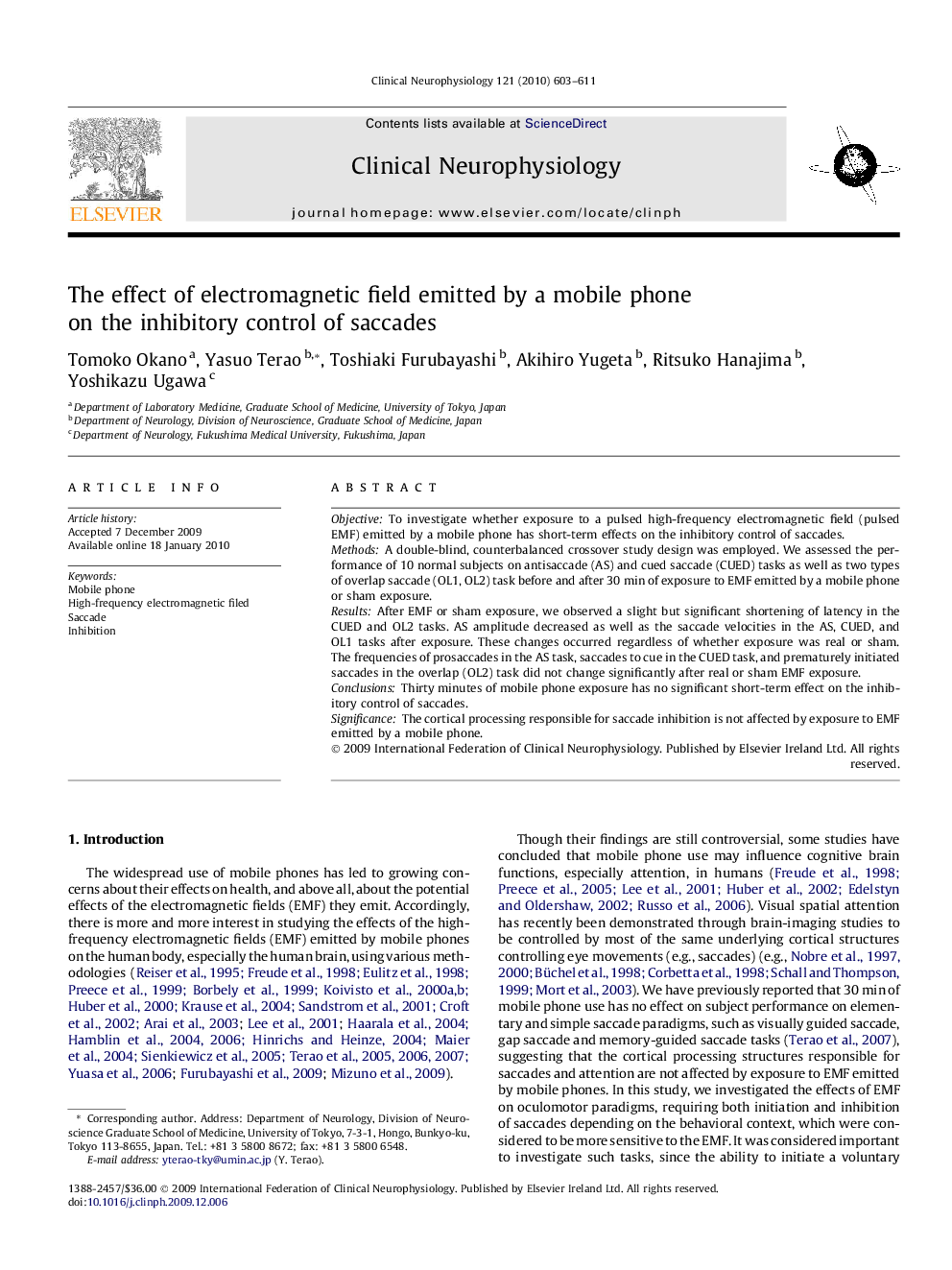| Article ID | Journal | Published Year | Pages | File Type |
|---|---|---|---|---|
| 6009207 | Clinical Neurophysiology | 2010 | 9 Pages |
ObjectiveTo investigate whether exposure to a pulsed high-frequency electromagnetic field (pulsed EMF) emitted by a mobile phone has short-term effects on the inhibitory control of saccades.MethodsA double-blind, counterbalanced crossover study design was employed. We assessed the performance of 10 normal subjects on antisaccade (AS) and cued saccade (CUED) tasks as well as two types of overlap saccade (OL1, OL2) task before and after 30 min of exposure to EMF emitted by a mobile phone or sham exposure.ResultsAfter EMF or sham exposure, we observed a slight but significant shortening of latency in the CUED and OL2 tasks. AS amplitude decreased as well as the saccade velocities in the AS, CUED, and OL1 tasks after exposure. These changes occurred regardless of whether exposure was real or sham. The frequencies of prosaccades in the AS task, saccades to cue in the CUED task, and prematurely initiated saccades in the overlap (OL2) task did not change significantly after real or sham EMF exposure.ConclusionsThirty minutes of mobile phone exposure has no significant short-term effect on the inhibitory control of saccades.SignificanceThe cortical processing responsible for saccade inhibition is not affected by exposure to EMF emitted by a mobile phone.
